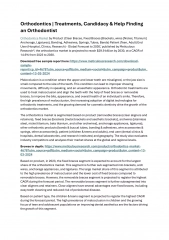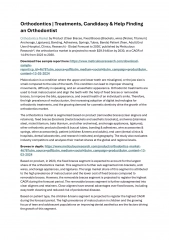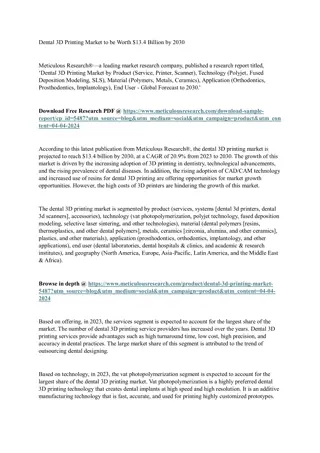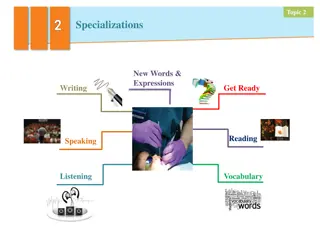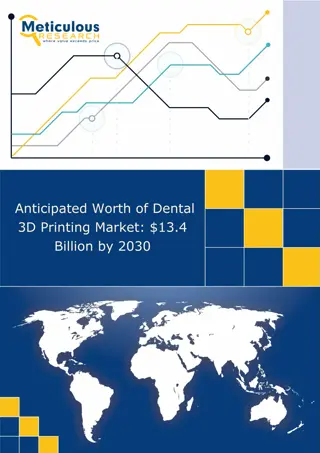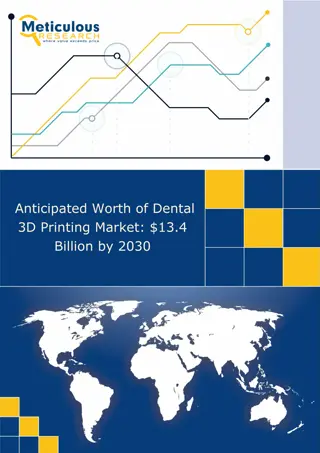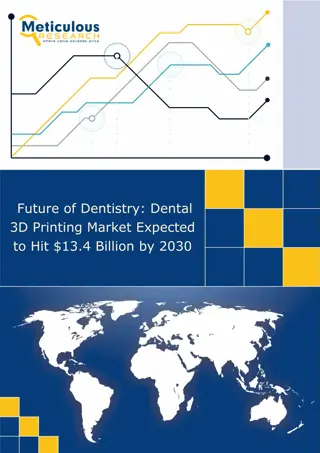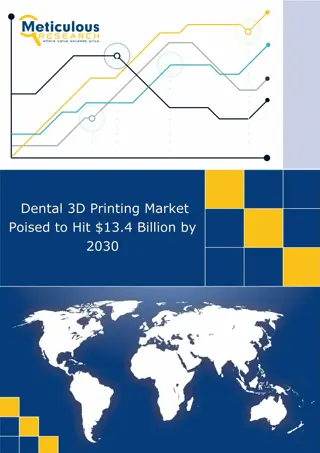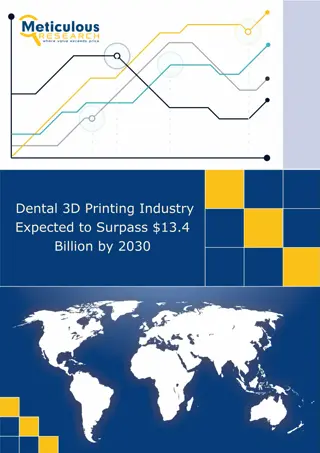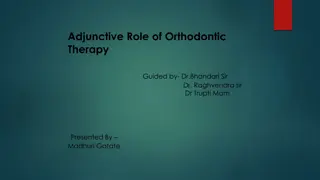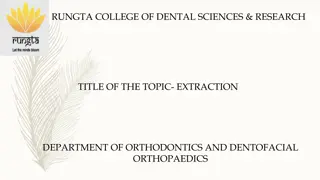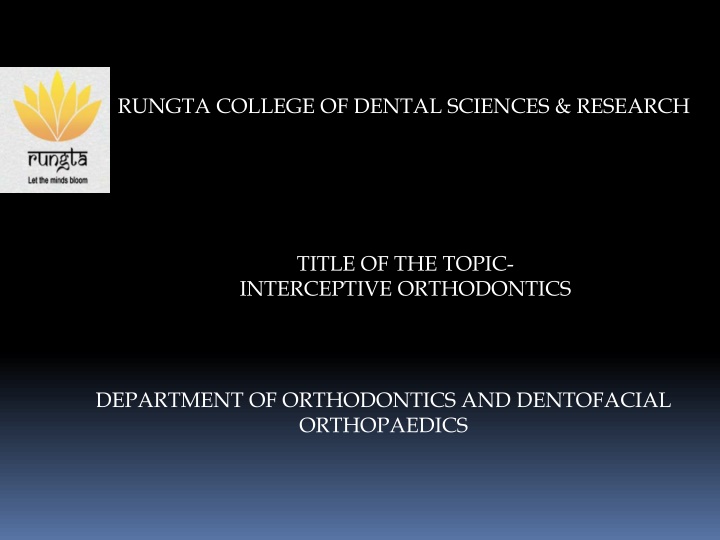
Understanding Interceptive Orthodontics in Dental Sciences
"Explore the world of interceptive orthodontics in dental sciences, focusing on procedures like serial extraction, habits interception, space regaining, and more to correct irregularities in developing dento-facial structures. Learn about the history, rationale, and techniques used in this specialized field."
Uploaded on | 4 Views
Download Presentation

Please find below an Image/Link to download the presentation.
The content on the website is provided AS IS for your information and personal use only. It may not be sold, licensed, or shared on other websites without obtaining consent from the author. If you encounter any issues during the download, it is possible that the publisher has removed the file from their server.
You are allowed to download the files provided on this website for personal or commercial use, subject to the condition that they are used lawfully. All files are the property of their respective owners.
The content on the website is provided AS IS for your information and personal use only. It may not be sold, licensed, or shared on other websites without obtaining consent from the author.
E N D
Presentation Transcript
RUNGTA COLLEGE OF DENTAL SCIENCES & RESEARCH TITLE OF THE TOPIC- INTERCEPTIVE ORTHODONTICS DEPARTMENT OF ORTHODONTICS AND DENTOFACIAL ORTHOPAEDICS
Specific learning Objectives CORE AREAS DOMAIN CATEGORY DEFINITION & PROCEDURES SERIAL EXTRACTION AFFECTIVE DESIRE TO KNOW PSYCOMOTOR MUST KNOW INTERCEPTION OF HABITS COGNITIVE MUST KNOW MUST KNOW SPACE REGAINING PSYCOMOTOR MUST KNOW MUSCLE EXERCISES PSYCOMOTOR
CONTENTS PART I INTRODUCTION DEFINITION & PROCEDURES SERIAL EXTRACTION: History, Rationale, Indications, Contraindications. Advantages, Disadvantages, Diagnostic Procedures, Procedures in Serial Extraction. ~ Dewel s Method ~ Tweed s Method ~ Nance s Method PART II INTERCEPTION OF HABITS : Thumb Sucking Tongue thrusting Mouth breathing SPACE REGAINING MUSCLE EXERCISES : For lip, For masseter, For circumoral musculature
INTERCEPTIVE ORTHODONTICS Interceptive orthodontics has been defined as that phase of the science and art of orthodontics employed to recognize and eliminate potential irregularities and malpositions of the developing dento-facial complex. The procedures undertaken in interceptive orthodontics include: 1. Serial extraction 2. Correction of developing crossbite 3. Control of abnormal habits 4. Space regaining 5. Muscle exercise 6. Interception of skeletal malrelations 7. Removal of soft tissue or bony barrier to enable eruption of teeth
SERIAL EXTRACTION Serial extraction is an interceptive orthodontic procedure usually initiated in the early mixed dentition when one can recognize and anticipate potential irregularities in the dento- facial complex and is corrected by the procedure that includes the planned extraction of certain deciduous teeth and later specific permanent teeth in an orderly sequence and pre- determined pattern to guide the erupting permanent teeth into more favourable position.
History Kjellgren in 1929 used the term serial extraction to describe the procedure Nance during the 1940 s popularized this technique in The united states of america and termed it planned & progressive extraction . Hotz in 1970 called such a procedure active supervision of teeth by extraction .
Rationale Serial extraction is based on two basic principles. Arch length tooth material discrepancy: Whenever there is an excess of tooth material as compared to the arch length, it is advisable to reduce the tooth material in order to achieve stable results. This principle is utilized in serial extraction procedures where tooth material is reduced by selective extraction of teeth so that the rest of the teeth can be guided to normal occlusion.
Physiologic tooth movement: Human dentition shows a physiologic tendency to move towards an extraction space. Thus by selective removal of some teeth the rest of the teeth which are in the process of eruption are guided by the natural forces into the extraction spaces.
Indications Class I malocclusion showing harmony between skeletal and 1. muscular system. Where growth is not enough to overcome the discrepancy 2. between tooth material and basal bone. Patients with straight profile and pleasing appearance. 3. Arch length deficiency as compared to the tooth material is the most important indication for serial extraction 4.
Arch length deficiency is indicated by the presence of following features: Absence of physiologic spacing Ectopic eruption of teeth Mesial migration of buccal segment Abnormal eruption pattern & sequence Lower anterior flaring Ankylosis of one or more teeth
Contraindications 1. Class II & III malocclusion with skeletal abnormalities. 2. Spaced dentition 3. Anodontia / oligodontia 4. Open bite and deep bite 5. Midline diastema 6. Class I malocclusions with minimal space deficiency 7. Unerupted malformed teeth e.g.dilaceration 8. Extensive caries or heavily filled first permanent molars 9. Mild disproportion between arch length and tooth material that can be treated by proximal stripping.
Advantages of serial extraction Serial extraction carried out during the mixed dentition and early permanent dentition period has a number of advantages: a. Treatment is more physiologic as it involves guidance of teeth into normal positions making use of the physiologic forces. b. Psycological trauma associated with malocclusion can be avoided by treatment of the malocclusion at an early age. c. It eliminates or reduces the duration of the multibanded fixed treatment.
d. Better oral hygiene is possible thereby reducing the risk of caries. e. Health of investing tissue is preserved. f. Lesser retention period is indicated at the completion of treatment. g. More stable results obtained as the tooth material and arch length are in harmony.
Disadvantages of serial extraction a. Serial extraction requires clinical judgement. There is no single approach that can be universally applied to all patients. Each patients has to be assessed and a suitable extraction timetable planned. b. Treatment time is prolonged as the treatment is carried out in stages spread over 2-3 years. c. It requires the patients to visit the dentist often. thus patient co-operation is needed.
d. As extraction spaces are created that close gradually, the patient has a tendency of developing tongue thrust. e. Extraction of buccal teeth can result in deepening of the bite. f. Ditching or space can exist between the canine and second premolar. g. The axial inclination of teeth at the termination of the serial extraction procedure may require correction.This necessitates short term fixed appliance therapy.
Diagnostic procedure The diagnostic exercise prior to treatment should involve comprehensive assessment of dental, skeletal and soft tissues. A tooth material arch length discrepancy must ideally exist. According to many authors, an arch length deficiency of not less than 5-7mm should exist to undertake this procedure. Study model analysis should be carried out to determine the arch length discrepancy. Carey s analysis in the lower arch and arch perimeter analysis in the upper arch should be carried out.
Study model analysis should be carried out to determine the arch length discrepancy. Carey s analysis in the lower arch and arch perimeter analysis in the upper arch should be carried out. Mixed dentition analysis helps in determining the space required for the erupting buccal teeth. The eruption status of the dentition is evaluated from an O.P.G. The skeletal tissue assessment should involve comprehensive cephalometric examination to study underlying skeletal relations. The soft tissue assessment by clinical examination and cephalograms help in the diagnosis.
Procedure A number of methods or sequences of extraction have been described . Three of the popular methods are: a. Dewel s method b. Tweed s method c. Nance method Dewel s method: Dewel has proposed a 3 step serial extraction procedure. In the first step the deciduous canines are extracted to create space for the alignment of the incisors.
This step is carried out at 8-9 years of age. A year later, the deciduous first molars are extracted so that the eruption of first premolars is accelerated. This is followed by the extraction of erupting first premolars to permit the permanent canines to erupt in their place. In some cases a modified Dewel s technique is followed wherein the first premolars are enucleated at the time of extraction of the first deciduous molars. This is frequently necessary in the mandibular arch where the canines often erupt before the first premolars.
Tweeds method: This method involves the extraction of the deciduous first molars around 8 years of age. This is followed by the extraction of the extraction of the first premolars and the deciduous canine simultaneously. Nance method: This is similar to Tweed s technique and involves the extraction of the deciduous first molars followed by the extraction of the first premolars and the deciduous canines. Post serial extraction fixed therapy Most cases of serial extraction need fixed appliance therapy for the correction of axial inclination and detailing of occlusion.
SUMMARY The malocclusion may be accepted or be treated in a variety of ways. The procedures undertaken in interceptive orthodontics include: 1Serial extraction. 2. Space regaining 3. Correction of developing cross bite. 4. Oral habit elimination. 5. Muscle exercises. 6. Interception of developing skeletal malocclusion. 7Removal of soft tissue or bony barrier to enable eruption of teeth.
REFERENCES Textbook of Orthodontics Gurkeerat Singh, Jaypee Brothers; 2nd Edition Orthodontics The Art and Science, S.I Bhalajhi, AryaMedi Publishing; 7th Edition Textbook of Orthodontics Sridhar Premkumar, Elsevier; 1st Edition Orthodontics: Diagnosis and Management of Malocclusion and Dentofacial Deformities O.P Kharbanda, Elsevier; 1st Edition

